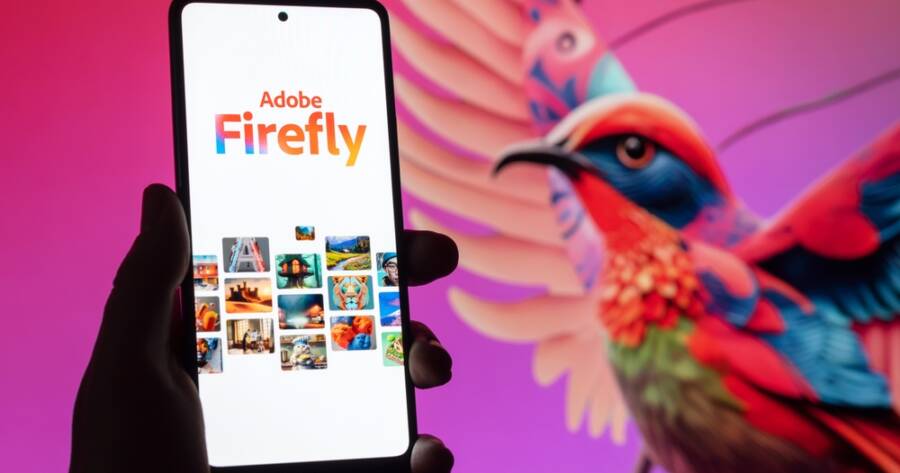Adobe has long been a leader in creative software, with tools like Photoshop, Illustrator, and Premiere Pro being the go-to for designers, photographers, and videographers. Recently, Adobe Firefly, its new AI-powered suite of tools, has been introduced to further streamline creative workflows. But how exactly is Adobe Firefly changing the game for professionals and hobbyists alike?
What is Adobe Firefly?
Adobe Firefly is a suite of artificial intelligence-powered tools integrated into the Adobe Creative Cloud. It focuses on generative design, allowing users to create and edit images, videos, and graphics with the help of advanced AI algorithms. Firefly’s technology is designed to make creative tasks faster, easier, and more efficient, by automating aspects of the design process that traditionally required manual input.
At its core, Firefly allows for text-to-image generation, where users can input prompts, and the AI will generate visuals based on those instructions. This could range from creating images from scratch to editing existing content by simply describing changes in words. Adobe Firefly also includes tools for colorization, style transfer, and content-aware editing, which aim to help creatives focus more on their ideas and less on the technicalities of design.
Simplifying Complex Tasks
One of the most significant ways Adobe Firefly is changing the creative landscape is by simplifying complex tasks. Traditionally, certain design elements like creating realistic textures, adjusting lighting, or editing images to fit specific visual styles required advanced skills and significant time investment. With Firefly, many of these tasks can be automated with a few keystrokes or clicks.
For example, Firefly’s text-to-image tool allows users to create detailed visual concepts just by typing out descriptions. This drastically reduces the time spent brainstorming and creating assets from scratch. Additionally, Firefly’s smart editing features enable designers to manipulate images in ways that were previously time-consuming, such as adjusting the background or adding new elements to a photo.
This means that individuals who may not have extensive design experience can now create professional-quality content. Firefly’s ease of use levels the playing field, making high-level design more accessible to a broader range of users.
Enhancing Collaboration and Creativity
Adobe Firefly also offers powerful features that enhance collaboration between creatives. With the integration of AI tools, teams can work together seamlessly, sharing assets and collaborating on projects in real time. Firefly’s cloud-based system allows creatives to access and modify files across devices, making it easier for teams to stay connected and maintain consistency across projects.
Moreover, Firefly encourages greater creativity. With AI-powered tools taking care of repetitive and technical tasks, designers and creators are freed up to focus on the more conceptual aspects of their work. Firefly’s intuitive features allow users to experiment with new ideas quickly, taking creative risks that might have been too time-consuming in the past.
Whether it’s editing a photo, creating motion graphics, or designing a logo, Firefly allows creatives to push boundaries while saving time. This change is particularly impactful for industries where rapid content production is key, such as marketing, advertising, and social media.
Seamless Integration with Creative Cloud
Another standout feature of Adobe Firefly is its seamless integration with Adobe’s Creative Cloud. Adobe’s suite of tools has long been a staple in the creative industry, and Firefly’s compatibility with these tools makes it an even more powerful addition. Users can work within their existing workflows, adding Firefly’s AI-powered features without having to learn an entirely new system.
Whether you’re working in Photoshop, Illustrator, or After Effects, Firefly integrates smoothly into each program. For instance, you can generate a quick background or texture in Firefly and immediately apply it to your design in Photoshop. This integration ensures that Firefly enhances your current design process rather than disrupting it.
For users who are already familiar with Adobe’s tools, Firefly feels like a natural extension, allowing them to complete tasks more efficiently and effectively.
Potential Concerns with Adobe Firefly
While Adobe Firefly offers a range of benefits, there are some concerns surrounding the use of AI in creative fields. One of the biggest issues is the risk of AI-generated content lacking the human touch. Creativity often stems from unique personal experiences and emotions, and AI-generated content may sometimes lack the depth or originality that comes from human creators.
Additionally, there is the question of intellectual property. As AI tools like Firefly create content based on user input, who owns the rights to the content produced? This is an ongoing discussion in the creative industry, and it will likely continue to evolve as AI becomes more integrated into the creative process.
Despite these concerns, Adobe is committed to ensuring that Firefly complements rather than replaces human creativity. The platform is designed to assist rather than take over the creative process, providing tools that enable users to work smarter, not harder.
Adobe Firefly’s Impact on the Creative Industry
Adobe Firefly is undoubtedly reshaping the way creatives approach design, offering tools that streamline the process and empower users to create more efficiently. As the technology behind Firefly continues to evolve, it will likely play an even more integral role in the creative industry, making tasks that were once time-consuming and technical much easier.
While there are valid concerns about the role of AI in art, Firefly’s integration with Adobe’s existing tools shows that it has the potential to elevate, rather than replace, human creativity.

